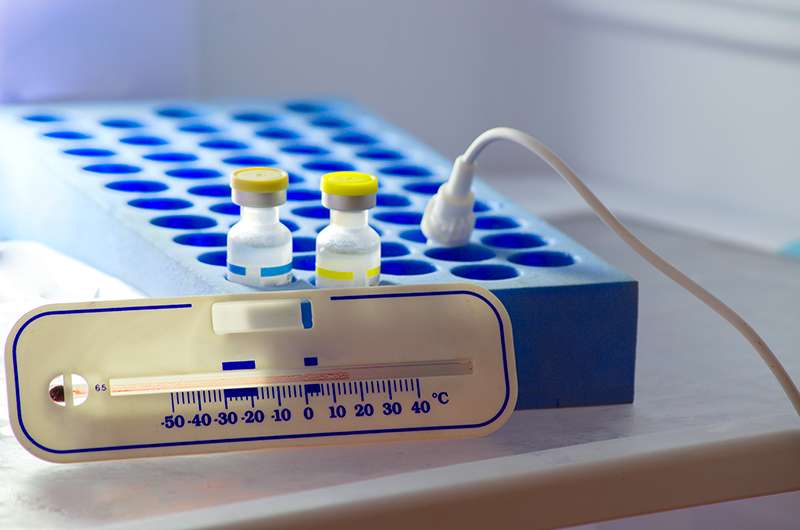
Several pharmaceutical companies, working tirelessly throughout 2020, have finally managed to produce and make available vaccines against the COVID-19 virus .
Vaccines have already passed the testing and approval phase. They just need to be distributed.
One might think that it is all downhill from here and that the distribution of vaccine doses is something simple and easy. Instead, it is not at all. This operation, in fact, requires considerable technical and logistical challenges to be carried out successfully.
COVID 19 vaccine distribution
Vaccines, of any kind, are very sensitive to temperature. This is especially true for Pfizer's brand new RNA vaccines. It is a very advanced biotechnology which, through a lipid nanoparticle, transports an Rna molecule inside the cells. Both components are very unstable and delicate molecular structures, which require storage at very low temperatures: from -70 ° C to -80 ° C.
These are temperatures that we never meet in everyday life and therefore it is not easy to realize how low they are.
To give an idea of what -70 ° C means, just think that at that temperature carbon dioxide is in a solid state. Our breath becomes ice!
It is clear that special refrigerators are needed which are capable of reaching temperatures 3-4 times lower than those of a normal freezer.
Fortunately, these refrigerators exist. They are called cryogenic refrigerators , and are commercially available in a wide range of models.
Problem solved… or not?

COVID cold chain: easier said than done
Unfortunately, buying thousands of cryogenic refrigerators, filling them with COVID vaccines and ship them around the world it is not enough. This is a difficult operation and much more complicated than it may seem at first glance.
A 2019 study discovered that 25% of vaccines arrive at their destination degraded. Considering that we are talking about relatively undemanding vaccines, which "only" need to be kept at few degrees below zero, the prospect for vaccines that require lower temperatures is not the best.
Vaccine storage: how to avoid a disaster?
To ensure optimal transportation of COVID 19 vaccines, it is necessary:
- Constantly monitoring the ambient temperature
- Keeping the temperature as stable as possible.
Monitoring the temperature in the cold chain
Monitoring the temperature means measuring the temperature at regular time intervals. In this way it is possible to keep the temperature trend under constant control.
Data loggers were created right for this: they record the temperature at very short intervals (in the order of seconds, or even less depending on the case). In this way you get the most accurate measurement possible.
Based on the model, the data loggers are able to independently detect temperature fluctuations and, through fully automated mathematical calculations, allow us to understand immediately whether the temperature has remained at acceptable levels or not during the various phases of the transport.
The 4 temperatures for monitoring the cold chain
We just said that one of the challenges of vaccines transportation logistics is to keep the temperature constant.
It would be the perfect solution. However, in real life, the temperature is never stable in an absolute sense. It will continue to fluctuate, affected by environmental changing conditions during transport.
So, what reference temperature should we consider to verify the correct conservation of the product we transport?
In this case we will not have a single reference temperature, but 4:
- Absolute maximum temperature. The maximum temperature to which the product can be exposed.
- Optimal maximum temperature. The upper limit of the optimal temperature range.
- Optimal minimum temperature. The lower limit of the optimal temperature range.
- Absolute minimum temperature. The minimum temperature the product can be exposed to.
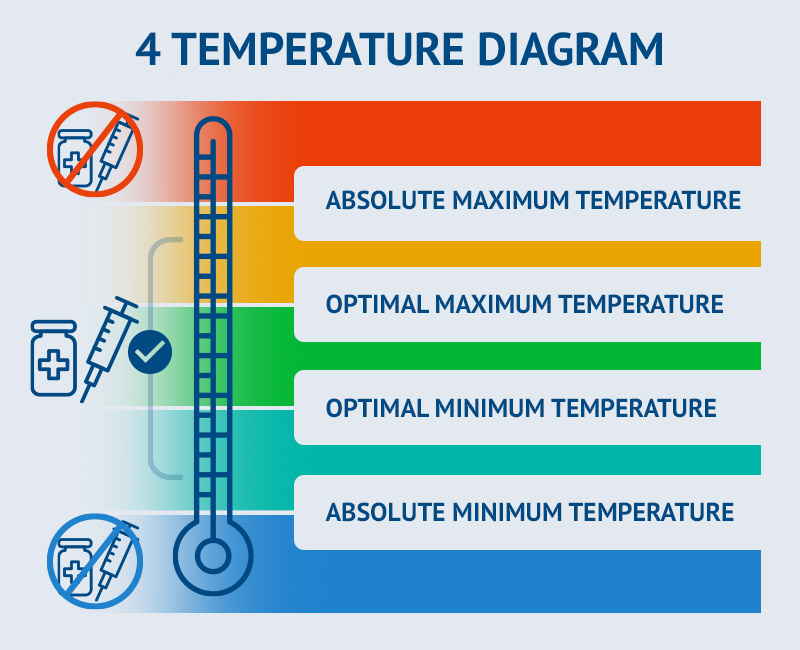
If the temperature goes beyond the absolute maximum or minimum threshold, the vaccine should be discarded. The same thing happens if the average of these measurements is above or below the optimal temperature thresholds.
Is it right to follow the 4 temperatures?
This approach would seem correct, and indeed, theoretically, it works very well. But if we put it into practice, it has one huge flaw: it is too severe.
Following the 4 temperatures as the only method for verifying the cold chain means, potentially, discarding millions doses of vaccine that are actually not damaged. This can mean losses of tens of millions of euros, not to mention the huge economic and social damage resulting from lack of vaccination coverage against COVID 19.
But if the COVID 19 vaccine does not withstand temperatures below -80 ° C and above -70 ° C, why should we also consider doses that have been subjected to higher or lower temperatures to be good?
This reasoning may seem incomprehensible. It will be easier with an example taken directly from our daily life.
The cold chain explained with a yogurt
Let's take the purchase of a yogurt as a reference.
In the supermarket, the yogurt is located in the refrigerator department because it must be stored at an optimal temperature around 4 degrees.
As soon as it is taken out of the fridge, a yogurt experiences very different temperatures. While it remains in the shopping cart, it will be exposed to an environmental temperature between 20 and 23 degrees. Outside the supermarket, it may be exposed to very low temperatures (if it is winter), otherwise very high (if it is summer). Finally, it will be placed in the refrigerator, where it will return to the ideal temperature of 4 ° C.
If we took the 4-temperature approach literally, we would have to discard that yogurt, as it has been exposed to temperatures far outside its optimal range. Still, we don't.
Why?
The answer is that the temperature alone is likely to mislead us.
In fact, the real goal of cold chain logistics is to keep the product intact from the beginning to the end of transport. Preserving the product means, in other words, preventing it from deteriorating.
The deterioration of the product mainly depends on two factors: temperature and time. And it is precisely from the relationship between these two quantities that the “golden measure” of the cold chain derives: the MKT.
MKT: the basic parameter for monitoring the cold chain
MKT (mean kinetic temperature, (mean kinetic temperature, or 'average kinetic temperature') is a parameter that takes into account the activation energy, that is, the biological degradation of the product.
Let's start from an assumption: the product always degrades. So, to put it simply, it doesn't last forever but has an expiration date even in an ideal temperature condition. Except that, out of its ideal temperature range, the speed with which it degrades increases..
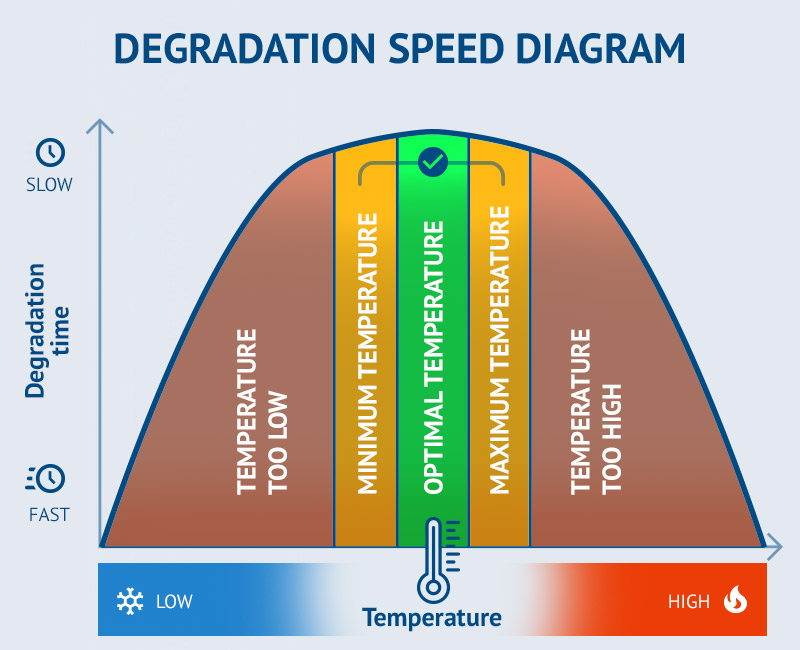
To better understand this concept, let's use a metaphor.
You have to travel 50 km in an hour to get to your destination. You can do this in several ways:
- You always travel at a constant speed of 50 km / h. Then, you will arrive at your destination in 1 hour.
- Go at 50km / h, but overtake 10 times at 80km / h. You will arrive at your destination several minutes early.
- Go at 50km / h, but only overtake once at 80km / h. You will arrive at your destination not in an exact time, but just a few seconds in advance, therefore negligible.
Now, let’s pretend that the speed is the temperature, and the destination is the product expiration.
- Case 1 (constant temperature) is an ideal case which in real life is almost impossible to obtain.
- Case 2 (strongly fluctuating temperature) is a possible case, which can happen in real life and which would lead to an earlier expiration date of the product.
- Case 3 (constant temperature with limited fluctuations over time) is also possible: even if there is a "jerk" to the constant, the time to reach the expiration date is not substantially changed.
MKT follows this very principle.
MKT: how do I calculate it?
MKT is the temperature which, if it were constant, would give the same decay level as a product subject to temperature variations.
A good MKT remains within the optimal temperature range of the product, and is always higher than the mathematical average of the temperatures detected.
MKT formula
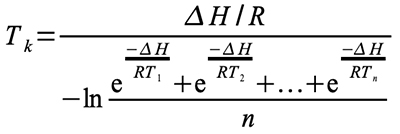
Tk = MKT in ºK
ΔH = activation heat / activation energy
R = universal gas constant (8.3144 x 10-3 kJ.mole-1 x ºK-1)
Ti = temperature in ºK
n = total number of equal time intervals during which data is recorded.
The MKT formula, based on the Arrhenius equation, is a bit complex for those who are not mathematicians, and it is definitely impractical to calculate by hand.
For this reason, Tecnosoft has developed data loggers for logistics that calculate the MKT automatically, also reporting if the MKT exceeds the threshold of the optimal range. All the user has to do is read the data and make the correct decision.
Cold chain temperature monitoring: a real case
An important company that deals with software solutions had the need to ensure a constant monitoring system of the cold chain for the distribution of biological material. The project focused, especially, on units of plasma and biological samples and drugs, including vaccines for COVID 19.
The cold chain to be monitored is characterized by extremely low temperatures (with peaks reaching -80 ° C).
Tecnosoft, as supplier, has been contacted for the supply of specific data loggers for temperature monitoring in cryogenic refrigerators.
The solution, offered by Tecnosoft, focused on two data logger models in our catalog capable of measuring temperatures down to -80 ° C, and then saving the data in the cloud.
The data loggers have been customized to ensure the maximum adhesion to requirement demanded and to be conformed to other technological equipment.
The devices used
Logger TempNFC Probe contactless -80°
This data logger measures temperature from -80 ° C down to 20 ° C, making it perfect for monitoring the temperatures of high temperature sensitive vaccines and drugs. It can be managed with an Android app available on Google Play. The data are saved in the cloud and they are available in real time.
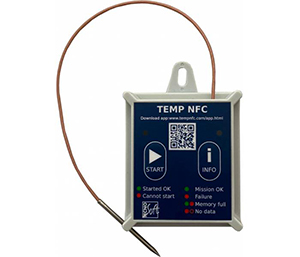
BlueLOG P -80° bluetooth
Data logger with similar characteristics to the previous one, it is the ideal solution for monitoring the temperature in cryogenic cells. It is possible to program an automatic alarm that notifies the detection of temperature anomalies. The data is transmitted to the computer, smartphone or printer for data loggers via Bluetooth.
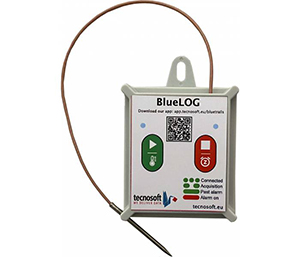
Are you interested in our temperature monitoring solutions for the cold chain?
 Flip through our history
Flip through our history



